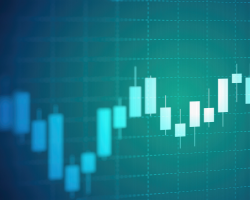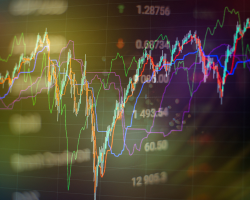What is the best method of analysis for forex trading? [2022 Guide]
![What is the best method of analysis for forex trading? [2022 Guide]](/sites/default/files/2022-08/what-is-the-best-method-of-analysis-for-forex-trading-2022-guide_1.png)
The forex market is a rather complex and difficult to predict financial institution. The movement of currency pairs depends on a whole range of economic, political, and social factors. Their close interaction and complex influence on the market are often difficult to predict, especially the strength and direction of their impact on the price dynamics of a particular currency pair.
That is why basic methods of forex market analysis are aimed at detecting short-term trends. Successful trend prediction is based on the complex use of different methods of forex market analysis. Let us find out what they are, and which one is better.
How do you analyze a forex market?
Every beginner trader faces the problem of how to deal with the data that forex provides in abundance. Examining this data, one chooses the entry point when it is most beneficial to buy or sell.
It is necessary to analyze the market to make trading decisions during each day of trading. Forex trading strategies are based on market research. If in doubt of your ability to correctly analyze the market, you can resort to the use of various free and paid trading strategies, which were developed by experienced professionals. Traders who have accumulated a certain experience, for the most part prefer to develop their own strategies, developing their own style. In this case, trading is carried out in a comfortable mode, with confidence in their abilities, which allows you to achieve better results.
What are the 3 types of analysis in forex?
There are three main types of research activity used to analyze the market:
- Fundamental analysis;
- Sentiment analysis;
- Technical analysis.
Each of these has its specifics and scope. A beginner trader, already overloaded with information, can be tempted to choose one of the types of currency analysis and concentrate only on it.
It can be tempting to think that becoming a highly specialized specialist is enough to begin to understand their field. But to voluntarily give up a useful tool on the market is like shooting yourself in the foot. Competitors will use any tool that provides even a minuscule advantage.
Technical analysis
Another popular type of analysis is the technical analysis of the forex market. It represents the analysis of the price history of the considered currency pair, presented in the form of a chart. Analysis of the chart tells the trader when to enter and when to exit the trade. Various methods of technical analysis of the forex market allow traders to draw trend lines, resistance, and support levels on the chart, which enables them to predict further price movement. Because of its greater clarity and accessibility, the technical analysis of the forex market has gained well-deserved popularity among both beginners and professional traders.
The technical currency analysis has such convenient tools as indicators. The indicator is calculated based on price history represented on the chart and represents its certain quintessence allowing to focus on certain moments, rejecting thus everything superfluous.
For example, an MA indicator (moving average) allows showing the price movement in a smoothed form (with different parameters of smoothening set in the indicator settings). Various oscillatory indicators (MACD, Momentum, Stochastic and others) help identify the overbought and oversold zones on the chart of the financial instrument in question and, in addition, at the moments of their divergence from the chart (divergence) make fairly accurate conclusions about the imminent reversal of the current price trend.
Many traders prefer to use indicators because their signals are easy to read and this makes trading on forex easier and more intuitive.
Fundamental analysis
Fundamental analysis in principle (including for the stock market) is conducted at two main levels:
- Microeconomic;
- Macroeconomic.
However, as far as the currency market is concerned, it is predominantly influenced by macroeconomic factors. They are very convenient to keep track of through specialized economic calendars.
In addition, this calendar always shows both the actual and the forecasted value of the published parameter. This is done for the trader-analyst to be able to determine the expectations of the market about the value of a published fundamental factor and, depending on this, make conclusions about its influence on the rate of the currency to which it is directly related.
Fundamental analysis of the forex market focuses mainly on the interest rate of the currency. Other fundamental factors such as GDP (gross domestic product), inflation, production, the intensity of economic growth, and so on are also taken into consideration. However, certain fundamental factors are good or bad to the extent that they affect the interest rate of the country whose currency you are analyzing.
When you consider fundamental news releases, keep in mind how they could affect future interest rate movements. When investors are risk-averse, higher interest rates can mean more investment in that country's currency (which can lead to an increase in its exchange rate). When investors are risk-averse, funds is invested in other "safe" currencies.
Sentiment Analysis
Sentiment analysis is another widespread form of analysis. When you see that the sentiment of most investors is in the same direction, it means that they are already opening positions.
Market sentiment analysis is a promising tool often used by traders trading against the market crowd to open long or short positions. The principle behind their strategy is that if mostly long positions are open on a particular currency pair, the only direction in which the price will move further is down. Because these long positions will surely be closed by sales.
While understanding the three existing types of currency analysis is important, sentiment analysis, which is an addition to a trader's arsenal, is often underestimated. By applying this analysis to your trading, you can gain an advantage over those who only use technical or fundamental analysis.
The most popular tool for sentiment analysis is the Speculative Sentiment Index indicator.
It displays the correlation of buyers and sellers in any currency pair you choose. It is the most widely used and easy-to-understand indicator, and it gives us an overview of all positions on the market.
The SSI indicator is designed to help traders when entering the market in the direction opposite to the trades of the market crowd. As we said, if the market is predominantly bullish, the only direction it can go is down, because traders will close their positions sooner or later.
This knowledge will help you use the SSI indicator to trade against the crowd and open a position that allows you to benefit from potentially powerful and future market movements before they occur.
All three types of forex market data analysis seem equally important. Neither of them should be overly neglected, giving explicit preference to the other. Balancing them allows for a sufficiently correct analysis of the forex market. As a result, possible losses are reduced to a minimum, capital losses are infrequent, and returns can be obtained stably.
Applying Forex Market Analysis
Some traders prefer to concentrate on one type of analysis of the forex market because it makes it easier to thoroughly learn one section of the forex market. However, using a combined approach eliminates many of the disadvantages associated with concentrating on one method and increases the chances of identifying beneficial trades.
Truth be told, you need all three approaches to perform a comprehensive market analysis. Just as a three-legged stool requires the stability of all three legs, Forex trading also requires all three analysis options.
If you focus only on one technique and ignore the others, your analysis may be weak and could lead to losses. The weakness of one analysis technique can easily be overcome by considering another type of analysis.
Acquiring Forex Trading Systems and Strategies
When the trader's activity is considered as a short-term activity, which means that there is no time to study economic indicators, then of course technical analysis is preferred. Considering the trader's activity as a long term one has to provide oneself with opportunities to receive the news in a constant and timely manner to benefit from the fundamental analysis.
Since you are going to be a trader for a long time, it is advisable to master the use of all types of market analysis. You should not limit your possibilities and be one-sided. By analyzing the forex market correctly, a trader gets a certain advantage over competitors. He sees better when it is better to enter the market and when it is better to exit.
Experienced traders do not use only one type of analysis. To form a reliable idea about the market situation at forex, allowing to make the right decision about starting or stopping trading with the currency pair, fundamental, sentiment, and technical analysis tools are used in the complex.
Summary
Forex traders will always prefer one type of analysis.
While the above sounds perfectly normal, and we encourage you to choose the type that suits your trading strategy, the most successful traders can still combine elements of all three types.
Use fundamental analysis of the forex market to check the overall economic direction picture for deviations from the long-term trend. Back it up with short-term technical analysis to determine entry points with even greater accuracy. Lastly, assess market sentiment to make sure you are not trapped by changing market forces.
There's a well-known saying that everyone knows: "Knowledge is power."
That's why you can't stay in the dark when the information that can help you capitalize or, more importantly, keep you out of a loss, is right in front of your eyes.









